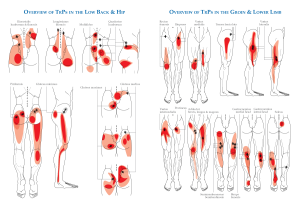Preventing Sciatica Flareups When Traveling

Category: | Author:
Sciatica is an uncomfortable condition that occurs when your sciatic nerve becomes damaged or compressed. Oftentimes this irritation is caused by a shifted spinal disc or degenerative spinal stenosis, but it can also develop following trauma to the lower back region. Since your lower back, hips, buttocks and legs are common areas for symptoms to develop, sitting for long periods can exacerbate your sciatica, meaning that long-distance travel is typically pretty uncomfortable.
We don’t want you to be a hermit who is afraid to travel because of a possible sciatica flareup. Instead, we want to give you the tools you need to comfortably manage your sciatica if you’ll be stuck in a seated position for an extended period. Below, we share five tips for preventing sciatica flareups while traveling.
Keeping Sciatica At Bay While Traveling
The seated position puts additional pressure on our lumbar spines, so if you’re stuck sitting for an extended period, your sciatic nerve could become irritated more easily. If you want to reduce your risk of a flareup while traveling, keep these five tips in mind.
- Get Up And Move – We understand that it’s not always easy to stand up and stretch when you’re in a car or on an airplane, but take advantage of times when you are given the opportunity to do so. If you are stopping for gas or food, or the captain has turned off the seatbelt light, get up and move around for a couple of minutes. This will help relieve static pressure on your lumbar spine and the areas that could be compressing your sciatic nerve.
- Leave Early – If you’re driving by car to your destination, make it a point to leave a little earlier than normal. This way you can hit up that rest stop or visit that gas station and take some time to stretch without causing problems for your intended arrival time. Plan ahead and leave a little early so that you can break up the trip and take some stress off your spine.
- Stay Hydrated – Drink plenty of water on your trip to ensure you stay hydrated. If you’re dehydrated, your muscles are more likely to spasm and cramp, which can cause problems for your spinal nerves and your sciatica. If you need a caffeinated beverage during your trip, be sure that you also have a water bottle nearby so you don’t get dehydrated.
- Pack A Pillow – Pack a small pillow or towel that you can place near the small of your back to help support your lumbar spine. If you’re hunched forward or leaning back in your seat, different areas of your spine will be forced to handle additional stress. If this stress is channeled to your lumbar spine, you’re increasing your risk of a sciatica flareup. Help naturally guide your spine into a healthy alignment with some additional padding and support.
- Pelvic Balance – Finally, it’s helpful to have symmetrical positioning of your arms and legs in relation to the other, as this helps to keep your hips in a neutral position. If one arm is slumped or you have cruise control on and one foot off to the side, you’re increasing the amount of pressure on your pelvic region, which can increase your likelihood of a sciatica flareup. Keep your arms parallel to one another, like at a 9 and 3 position on the wheel, and have both feet straight and towards the pedals, even if they aren’t actively engaged at all times. This will bring balance to your hips and pelvis and help to control sciatic nerve irritation.
If you do these things and you connect with Dr. Sinicropi for additional assistance, we’re confident that you can overcome your sciatica. For more information, or for help with a different spinal issue, reach out to Dr. Sinicropi and the team at The Midwest Spine & Brain Institute today at (651) 430-3800.
Related




